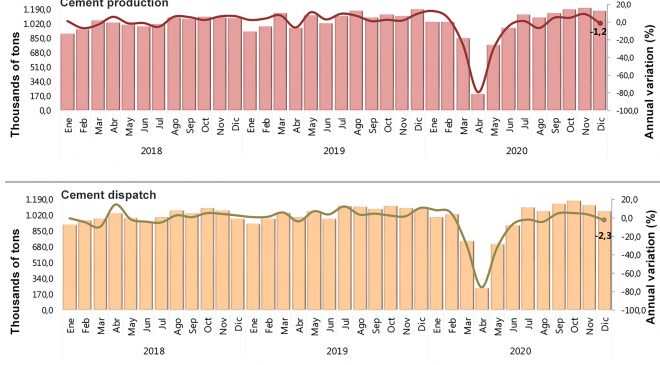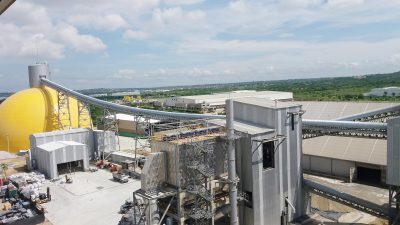By Mauro Nogarin
Political stability and good coordination between the different ministries of the current Colombian government played a fundamental role in facing the impact of COVID-19. For this reason, the production of the cement industry was able to respond quickly to the demand of the domestic market.
2020 began with great optimism. Economic data for January and February predicted new growth and the World Bank confirmed a 3.6% increase in GDP for last year. However, with the arrival of the COVID-19 in Colombia, the gross domestic product presented an annual decrease of 9% in the third quarter of 2020. The economic sectors that presented the greatest contraction were construction (-26.2%) and trade (-20.1%).
However, despite the sharp falls in the main economic sectors mentioned, the country began to show signs of recovery in the second half of 2020 in consumer confidence and in the industry, which as a whole generated a slight improvement in the unemployment rate.
Two factors also negatively contributed to the construction sector, with the consequent paralysis of many public works. The first was the enactment of different decrees in March, which forced the application of prevention measures against COVID-19. The second factor was the financial adjustment implemented by the Ministry of Economy due to the fall in oil prices, which negatively impacted the state’s income.
According to the statistics institute of the Colombian Construction Chamber (CAMACOL), the real estate sector approved a total of 19,054,179 sq. meters for buildings through September, a figure that corresponds to a decrease of 11.5% compared to the same period of the previous year. While the licenses for residential use correspond to 15,022,058 sq. meters with a reduction of 7.8% per year and the non-residential destination 4,032,121 sq. meters with a contraction of 22.9%.
Cement production in January-December 2020 totaled a volume of 11,848,600 tons, registering a decrease of 8.9% compared to the same period of the previous year. On the other hand, cement shipments to the national market reached 11,234,000 tons, presenting a variation of -10.2% compared to that registered in the period January-December 2019.
The COVID factor affected cement production from the end of March, the entire month of April and part of the month of May, however, thanks to the speed in the implementation of safety measures in the different cement plants it was able to limit even greater loss.

In December 2020, production of gray cement at the national level was 1,176,300 tons, which represented a decrease of 1.2% compared to the same month of 2019. In December 2020, 1,054,300 tons were shipped to the national market, which meant a decrease of 2.3% compared to December 2019.

Regarding the different distribution channels, in 2020 the main sectors affected by the decrease in total cement shipments were concrete companies (-23.7%) and commercialization (-5.2%).


Compared to the previous year, in 2020 the decrease in the channel of concrete companies subtracted 16.8 percentage points from the variation of gray cement dispatched in bulk. While, for its part, the variation of -7.2% in shipments of packaged gray cement was generated mainly by the marketing channels (-5.1%) and contractors (-20.0%).
From a geographic distribution point of view, the 16.8% reduction in shipments of gray cement in bulk was destined for the province of Bogotá (-29.7%), followed by Cundinamarca (-25.2%) and Antioquia (-13.4%), which together reduced 11.5 percentage points.
On the other hand, packed gray cement presented a variation of -7.2%, mainly explained by the decrease in the regions of Bolívar (-22.7%), Cundinamarca (-18.3%), the area of Bogotá (-15.1%) and Valle del Cauca (-9.1%), which together reduced 4.5 percentage points to the variation of the last 12 months.
Regarding cement exports, they went from 497,500 in 2019 to 614,600 tons, thus registering an increase of 23.5%.
In the annual variation of December 2020, compared to December 2019, the only group that presented a variation above the average was Materials (5.09%), which contributed 3.24 percentage points to the total variation (4.38%). Meanwhile, Labor (3.43%) and Machinery and equipment (1.05%) registered variations lower than the average.
Mauro Nogarin is Cement Americas’ Latin American contributor.


